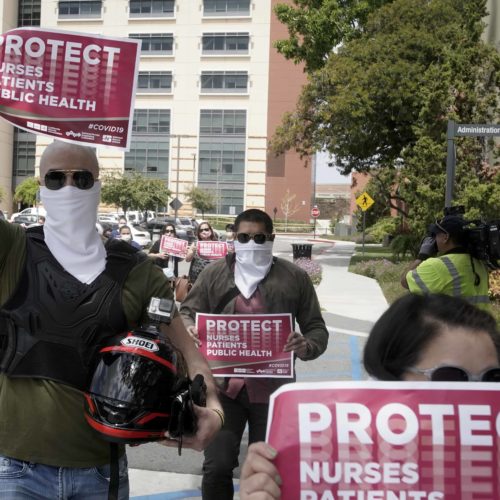Introduction
We’re continuing our series featuring journalists who have written powerful stories. Lance Williams and his colleagues from Reveal reported that California created a huge medical reserve complete with ventilators and N95 masks — and then let it collapse. A brutal recession, a free fall in state revenues and a $26 billion deficit forced the state to cut off money to store and maintain the stockpile of medical supplies and mobile hospitals. The programs would’ve allowed California to quickly respond as its COVID-19 cases exploded. Now, the state’s hospitals are being forced to ration N95 masks and rush to find ventilators.
How did you get the story?
The story came from tips developed separately by my talented partners, Will Evans and Will Carless. After that the reporting focused on finding public records to document the setup of the programs and their subsequent defunding during a budget crisis a few years later. Startup costs were $200 million-plus, and the cuts were to obtain savings of annual maintenance costs of about $5.8 million.
Many of the records came from the state legislature, and reports analyzing state budgets. Almost all were available online.
We also sought perspective on the rationale for defunding the programs. The state’s budget deficit was really bad when the cuts were made, but neither former Gov. [Jerry] Brown nor the current administration wanted to go on the record and defend the decision. Other interviews focused on attempting to trace some 2,400 ventilators that the state had given away when the pandemic program folded up.
What is your previous experience covering public health and epidemics?
I’ve done a couple of medical investigations.
None of that was much preparation for covering COVID-19. Actually, this story reminds me a little bit of covering the 1989 Loma Prieta earthquake in San Francisco. Then as now, there was no traffic on the streets and working conditions were preposterous (the power grid crashed, and the paper was put out the first night using an emergency generator). But the weird crisis atmosphere was over fairly quickly after the earthquake, whereas it looks like it will continue a long time with the pandemic.
What do you think reporters should be doing to cover COVID-19?
Reporters have to find ways to scrutinize the quality of government decisions, especially with regard to the effectiveness of the emergency response.
The takeaway: Journalists must hold elected officials to account over their handling of an emergency — even if you have to do it while working from home.


Join the conversation
Show Comments